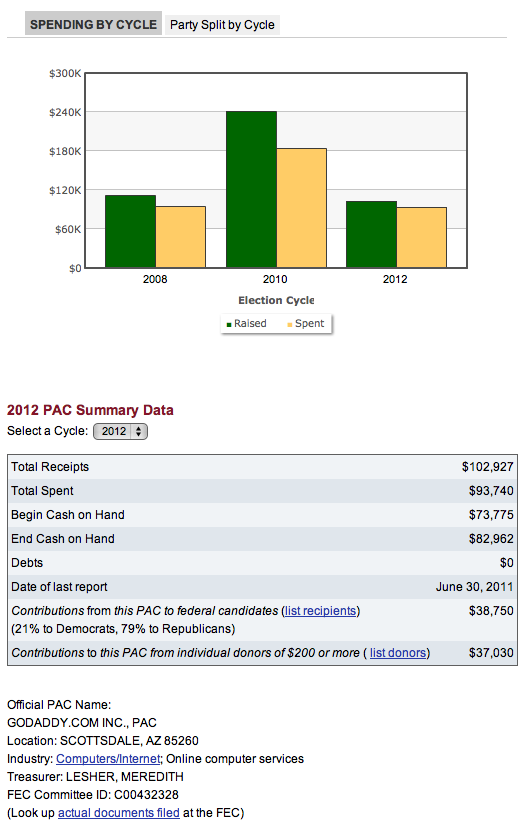Like many of you, I’ve been somewhat closely following SOPA (as well as its companion PROTECT IP Act, aka PIPA) and the growing online campaign to block their passage in recent weeks. It’s been great to see the web quickly mobilize to go after one of our own (using that phrase loosely here) and successfully compel GoDaddy to switch their position.
But, while it pains me to say this, there is one thing that GoDaddy did right.
If there’s anything that I’ve learned since making the leap into the tech startup world, it’s that execution is king. It’s one thing to have a cool idea, it’s quite another to build a company that can bring that idea to life. Ideas are cheap and easy, but executing on the right idea is what creates value. GoDaddy successfully worked the system to carve out an exemption for themselves. Or, put another way, they executed on a strategy to protect their narrow interests (a bad idea) while most everyone else and stood around talking about their opposition to the bills (a good idea).
What’s amazing about GoDaddy is that they seemingly did so w/o spending a ton of cash. Check out their own PAC spending through June 30, 2011 from OpenSecrets.org:
We all have much to learn from GoDaddy – and the boycott that compelled them to switch their position should now push them to reveal precisely what they did in order to obtain their exemption.
Everyone in the tech industry should be doing all that they can to oppose SOPA and PIPA. The big vote is coming up on January 24th, and this is an election year. If you’re an entrepreneur or investor, tell your elected officials that these bills will kill jobs. If you have the financial resources, donate generously to those candidates that oppose these bills and tell others that you would donate if they changed their opinion. If you’re a big company, hire the most aggressive lobbyist you can find and give them the resources to work their black magic.
I’m expecting more than a few folks will disagree with these last two sentences. They’ll cite Larry Lessig, telling me that by tying political donations to specific policy decisions we’re only reinforcing the system that got us into this mess in the first place. And while I couldn’t agree more, there is a time for idealism and a time for pragmatism. When both the mechanics of the web and the sharing culture of the web are threatened, we need to be pragmatic about our opposition. Make phone calls, write letters, leverage your network, show up to a town hall and – yes – use your financial resources to oppose SOPA/PIPA.
If you’ve got any doubts as to whether money can solve this problem, make sure to read about how SOPA supporters have contributed 4x more to elected officials than the tech industry.
–
My $0.02: The tech industry should have a broad vision in its political advocacy, kill SOPA and PROTECT IP by any means possible right fucking now, and fight for meaningful political reform in the long run. We want to see the system changed, but we also need the modern web to be around to enjoy what a reformed system would afford.
Hell – an emerging, innovative industry having to resort to spending cash to protect itself is a great story for all of the rootstrikers out there.
